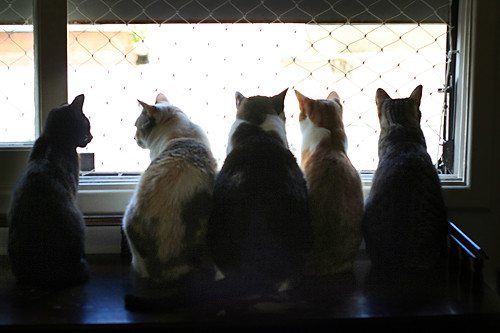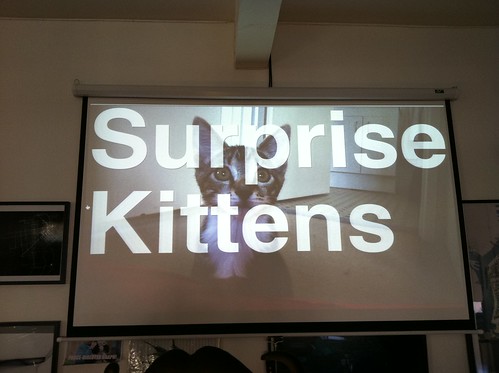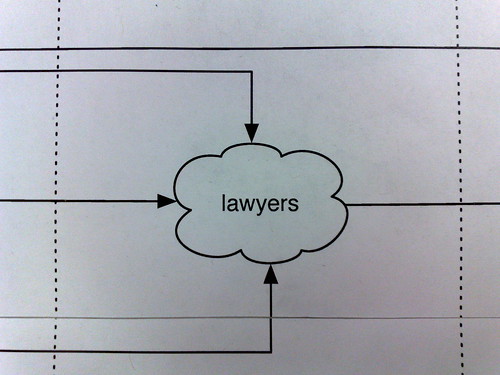Did you know that the new Front End of www.flickr.com is one big Flickr API client? Writing a client for an existing API or service can be a lot of fun, but decoupling and testing that client can be quite tricky. There are many different approaches to taking the backing service out of the equation when it comes to writing tests for client code. Today we’ll discuss the pros and cons of some of these approaches, describe how the Flickr Front End team tests service-dependent libraries, and introduce you to our new NodeJS HTTP playback module: yakbak!
Scenario: Testing a Flickr API Client
Let’s jump into some code, shall we? Suppose we’re testing a (very, very simple) photo search API client:
https://gist.github.com/jeremyruppel/fd25c723a5962a49936f174d765aa11a
Currently, this code will make an HTTP request to the Flickr API on every test run. This is less than desirable for several reasons:
- UGC is unpredictable. In this test, we’re asserting that the response code is an HTTP 200, but obviously our client code needs to provide the response data to be useful. It’s impossible to write a meaningful and predictable test against live content.
- Traffic is unpredictable. This photos search API call usually takes ~150ms for simple queries, but a more complex query or a call during peak traffic may take longer.
- Downtime is unpredictable. Every service has downtime (the term is “four nines,” not “one hundred percent” for a reason), and if your service is down, your client tests will fail.
- Networks are unpredictable. Have you ever tried coding on a plane? Enough said.
We want our test suite to be consistent, predictable, and fast. We’re also only trying to test our client code, not the API. Let’s take a look at some ways to replace the API with a control, allowing us to predictably test the client code.
Approach 1: Stub the HTTP client methods
We’re using superagent as our HTTP client, so we could use a mocking library like sinon to stub out superagent’s Request methods:
https://gist.github.com/jeremyruppel/8b837f439663db325aaa2437a2259934
With these changes, we never actually make an HTTP request to the API during a test run. Now our test is predictable, controlled, and it runs crazy fast. However, this approach has some major drawbacks:
- Tightly coupled with superagent. We’re all up in the client’s implementation details here, so if superagent ever changes their API, we’ll need to correct our tests to match. Likewise, if we ever want to use a different HTTP client, we’ll need to correct our tests as well.
- Difficult to specify the full HTTP response. Here we’re only specifying the statusCode; what about when we need to specify the body or the headers? Talk about verbose.
- Not necessarily accurate. We’re trusting the test author to provide a fake response that matches what the actual server would send back. What happens if the API changes the response schema? Some unhappy developer will have to manually update the tests to match reality (probably an intern, let’s be honest).
We’ve at least managed to replace the service with a control in our tests, but we can do (slightly) better.
Approach 2: Mock the NodeJS HTTP module
Every NodeJS HTTP client will eventually delegate to the standard NodeJS http module to perform the network request. This means we can intercept the request at a low level by using a tool like nock:
https://gist.github.com/jeremyruppel/d92a62400f635b42249adc041cdecc96
Great! We’re no longer stubbing out superagent and we can still control the HTTP response. This avoids the HTTP client coupling from the previous step, but still has many similar drawbacks:
- We’re still completely implementation-dependent. If we want to pass a new query string parameter to our service, for example, we’ll also need to add it to the test so that nock will match the request.
- It’s still laborious to specify the response headers, body, etc.
- It’s still difficult to make sure the response body always matches reality.
At this point, it’s worth noting that none of these bullet points were an issue back when we were actually making the HTTP request. So, let’s do exactly that (once!).
Approach 3: Record and playback the HTTP interaction
The Ruby community created the excellent VCR gem for recording and replaying HTTP interactions during tests. Recorded HTTP requests exist as “tapes”, which are just files with some sort of format describing the interaction. The basic workflow goes like this:
- The client makes an actual HTTP request.
- VCR sits in front of the system’s HTTP library and intercepts the request.
- If VCR has a tape matching the request, it simply replays the response to the client.
- Otherwise, VCR lets the HTTP request through to the service, records the interaction to a new tape on disk and plays it back to the client.
Introducing yakbak
Today we’re open-sourcing yakbak, our take on recording and playing back HTTP interactions in NodeJS. Here’s what our tests look like with a yakbak proxy:
https://gist.github.com/jeremyruppel/7050b34342a10d8e3dd8bc2dba0d50c0
Here we’ve created a standard NodeJS http.Server with our proxy middleware. We’ve also configured our client to point to the proxy server instead of the origin service. Look, no implementation details!
yakbak tries to do things The Node Way™ wherever possible. For example, each yakbak “tape” is actually its own module that simply exports an http.Server handler, which allows us to do some really cool things. For example, it’s trivial to create a server that always responds a certain way. Since the tape’s hash is based solely on the incoming request, we can easily edit the response however we like. We’re also kicking around a handful of enhancements that should make yakbak an even more powerful development tool.
Thanks to yakbak, we’ve been writing fast, consistent, and reliable tests for our HTTP clients and applications. Want to give it a spin? Check it out today: https://github.com/flickr/yakbak
P.S. We’re hiring!
Do you love development tooling and helping keep teams on the latest and greatest technology? Or maybe you just want to help build the best home for your photos on the entire internet? We’re hiring Front End Ops and tons of other great positions. We’d love to hear from you!



















